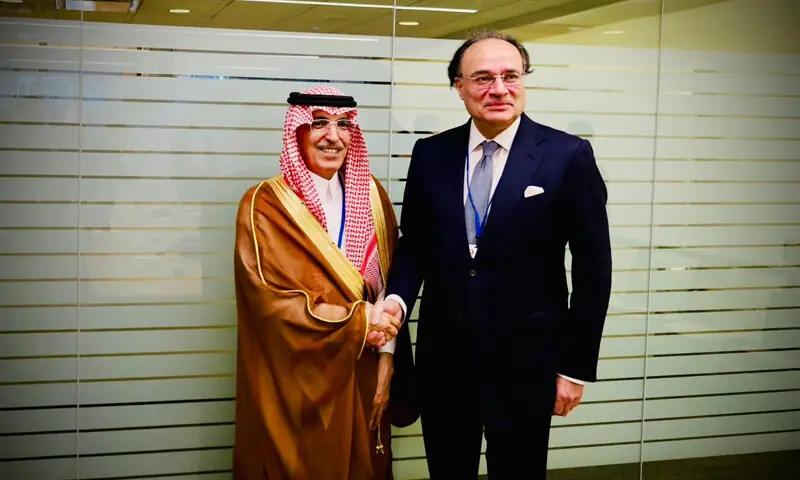Will Syria’s moderate extremists fulfill their promises of pluralism and will the country survive as a sovereign, united state in 2025?
As Gaza continued to burn and Lebanon withstood a barbaric Israeli attack, and as Iran and the Zionist state traded blows in an open historic confrontation, perhaps the defining moment in the Middle East and West Asia of 2024, amid a multitude of events monumental, were the fall of Bashar al-Assad’s Baathist regime in December and its replacement by a jihadist proto-democracy.
It would be safe to say that the momentous events that normally change the course of history occurred with incredible frequency in the outgoing year. Indeed, a new Middle East, baptized in blood and fire, was taking shape as competing forces – primarily the US-led Western combine with Israel as its regional vanguard aligned against the Iran-led “Axis of Resistance” – They were struggling to define what the new Middle East would be like. Although other actors are also involved, it is these two fields that defined West Asia’s geopolitics in 2024 and will continue to shape future outcomes, while the repercussions these changes will cause will be felt around the world.
The fall/liberation of Syria
Of a series of seismic events, the one that perhaps had the greatest global impact was the “fall” or “liberation” of Syria – depending on one’s geopolitical perspective – at the end of the year. For local and regional supporters of the Assad regime, the shocking collapse of his government came seemingly out of nowhere, while those who opposed the Syrian strongman celebrated his departure on a cold December night to Moscow, ending more than five decades of tight control by his family. fist dominion over this ancient and historic land.
The rebels, now owners of Damascus, had been fighting the Assad regime since the Syrian civil war broke out in 2011. Indeed, the conflict had absorbed regional and global actors; Russia and Iran had come to Assad’s defense, while the United States, Turkiye and the Gulf States financed and armed various factions to defeat him. Bashar al-Assad resisted for more than 13 years, but when a renewed rebel advance began in late November, led by Hayat Tahrir Al-Sham, a “reformed” version of Al Qaeda sanctioned by the UN, few would have believed that The 8 December, the rebels would march on Damascus while Assad flew gently into the night toward his Russian exile.
Will Syria’s moderate extremists fulfill their promises of pluralism and will the country survive as a sovereign, united state in 2025?
The rebel advance was surprising, as the various groups, led by HTS, took city after city, while the Syrian Arab Army collapsed without a fight. This was not only a defeat for Assad, but also for Russia and Iran, while Turkiye became the main foreign power broker in Syria. Meanwhile, Israel gloated, proceeding to demolish all of Syria’s defenses and seize more of the Arab state’s land while the powerful jihadists who had just dethroned Assad watched as the Zionist state trampled their country. Apparently, they were too “tired” for more war.
The new face of Syria was Abu Mohammad Al-Jolani, the head of the HTS, a “reformed” extremist who traded his fatigues for smart suits and spoke of inclusion and friendship with everyone except Iran. The million-dollar question in 2025 will be: will moderate extremists fulfill their promises of pluralism and will Syria survive as a sovereign and united state?
Gaza and Lebanon hit
Meanwhile, Israel continued its genocidal war in Gaza, mercilessly killing and starving the besieged Strip. The conflict that had been triggered by Hamas’ Operation Al-Aqsa Flood on October 7, 2023, transformed into a unilateral extermination of the Palestinian people. The revulsion among many members of the international community was so strong that the International Criminal Court in November issued arrest warrants for Israeli ruler Benjamin Netanyahu and former Defense Minister Yoav Gallant for their role in the Gaza massacre. Arrest warrants were also issued for Hamas leader Mohammad Deif.
Despite the interpretation that many Western governments and the mainstream media – seemingly marching in unison in a “sacred” defense of Israel – gave to the situation, brave voices called the Gaza massacre a genocide. Among them were UN committees, as well as Amnesty International and Human Rights Watch. Since October 2023, Israel has massacred more than 45,000 people in the occupied Strip. Many hundreds or even thousands more are believed to be buried beneath the apocalyptic ruins of Gaza. In multiple cases, Israel committed mass casualty attacks against civilians. But to the high and mighty of the West, this was “self-defense.”
Continuing its “decapitation” policy, Israel assassinated Hamas chief Ismail Haniyeh in late July when the Palestinian leader was in Tehran for the presidential inauguration of Masoud Pezeshkian. This coup, which Israel did not officially recognize until December, was a great embarrassment for Tehran, as an honored guest and key member of the Axis of Resistance was assassinated by Tel Aviv on Iranian soil. Haniyeh’s successor, Yahya Sinwar, would suffer a similar fate, when he fell fighting Israeli invaders in Gaza in October.
However, despite the loss of its senior leaders, Hamas remained undefeated; Eradicating the Palestinian armed movement was a declared war objective for Tel Aviv, an objective it clearly has not achieved. There was talk of a ceasefire from time to time, but as the year wound down, it was obvious that Israel was not interested in stopping its slaughter in Gaza and was seeking to permanently reoccupy the coastal strip.
Along with Gaza, Israel also expanded the theater of conflict to Lebanon, fighting the pro-Iran armed group Hezbollah in the most intense exchange of fire since the 2006 war. Israel’s justification for its war against Lebanon was rockets from Hezbollah who continued to hit Israel “in solidarity” with the Palestinians.
While the Zionist State and Hezbollah had been exchanging fire shortly after October 7, 2023, in 2024 things got out of control rather quickly. In September, thousands of pagers and walkie-talkies used by the Lebanese armed group exploded in an elaborate act of sabotage orchestrated by Israel. Days later, Tel Aviv would begin a savage bombing campaign against Lebanon, just as it had done in previous decades, murdering thousands of innocent people.
Among the biggest victims was Hezbollah chief Sayyad Hassan Nasrallah, a charismatic figure who had led the group for more than three decades. Tel Aviv, Israel’s arch-enemy, used aggression against Lebanon to wipe out Nasrallah – a long-standing Israeli desire – by using massive American bombs to demolish the Beirut complex where he was based.
Soon after, in another attack, Nasrallah’s cousin and presumed successor, Hashem Safieddine, was killed in October, leaving a shell-shocked Hezbollah in the hands of Naim Qassem, a member of the movement’s old guard. Israel has killed more than 3,000 people in Lebanon since October 2023.
A battle of nerves
While the shadow war between Iran and Israel had been going on for years, in 2024 things came to the fore when Tehran and Tel Aviv directly exchanged blows. As usual, it was Israel that played a key role in precipitating this confrontation, as a powerful attack carried out in April by Tel Aviv against an Iranian diplomatic facility in Damascus threw down the gauntlet to the Islamic Republic: would Ayatollah Khamenei and his men this provocation? , as they had ignored several other Israeli attacks against Iranian targets in Syria, as well as the assassination of Iranian scientists and military personnel inside the Islamic Republic. Or would they hit him back? The answer came in mid-April.
For the first time in history, the Iranians directly attacked Israel with a swarm of missiles and drones. Although the damage was said to be minimal, the message was clear. Things didn’t end there. The Israeli invasion of Lebanon and the annihilation of Hezbollah’s leadership – particularly the assassination of Nasrallah – were not well received in Tehran, and the reaction to Tel Aviv’s aggression came in the form of another barrage of Iranian missiles against Israel on October 1 . Although the Zionist state would carry out attacks on Iran later that month, a major conflagration was averted when Americans and Arabs reportedly warned Israel not to attack Iranian nuclear and oil facilities.
Requiem for an axis?
Although many commentators have declared the death of the Iran-backed “Axis of Resistance,” these obituaries may be premature. To be sure, Iran and its allies have spent the weekend overthrowing Assad and battering Hezbollah and Hamas.
However, both Hezbollah and Hamas remain intact as organizations. Furthermore, Yemen’s Houthis, also known as Ansarallah, the de facto rulers of that country, remain relatively unperturbed, although they remain far from the actual theater of the conflict. However, its blockade of the Red Sea in solidarity with Palestine from ships owned by or trading with Israel has had a major impact on global trade. The Houthis have also been the target of US, British and Israeli airstrikes, but continue to resist.
Meanwhile, Iran’s capabilities remain considerable despite setbacks. Therefore, in the new year, the conflict can be expected to intensify, as the ceasefire between Lebanon and Israel expires in January 2025, which could lead to the resumption of hostilities, and Tel Aviv refuses to end their genocide in Gaza. A great unknown will of course be Donald Trump; The incoming US president is known for his aversion to foreign wars, although his evangelical Zionist and neoconservative supporters will be eager to fight Iran and implement the “final solution” for all of Israel’s adversaries. If they go ahead with their messianic and deranged plans, then one can expect even more chaos in the Middle East in the new year.








